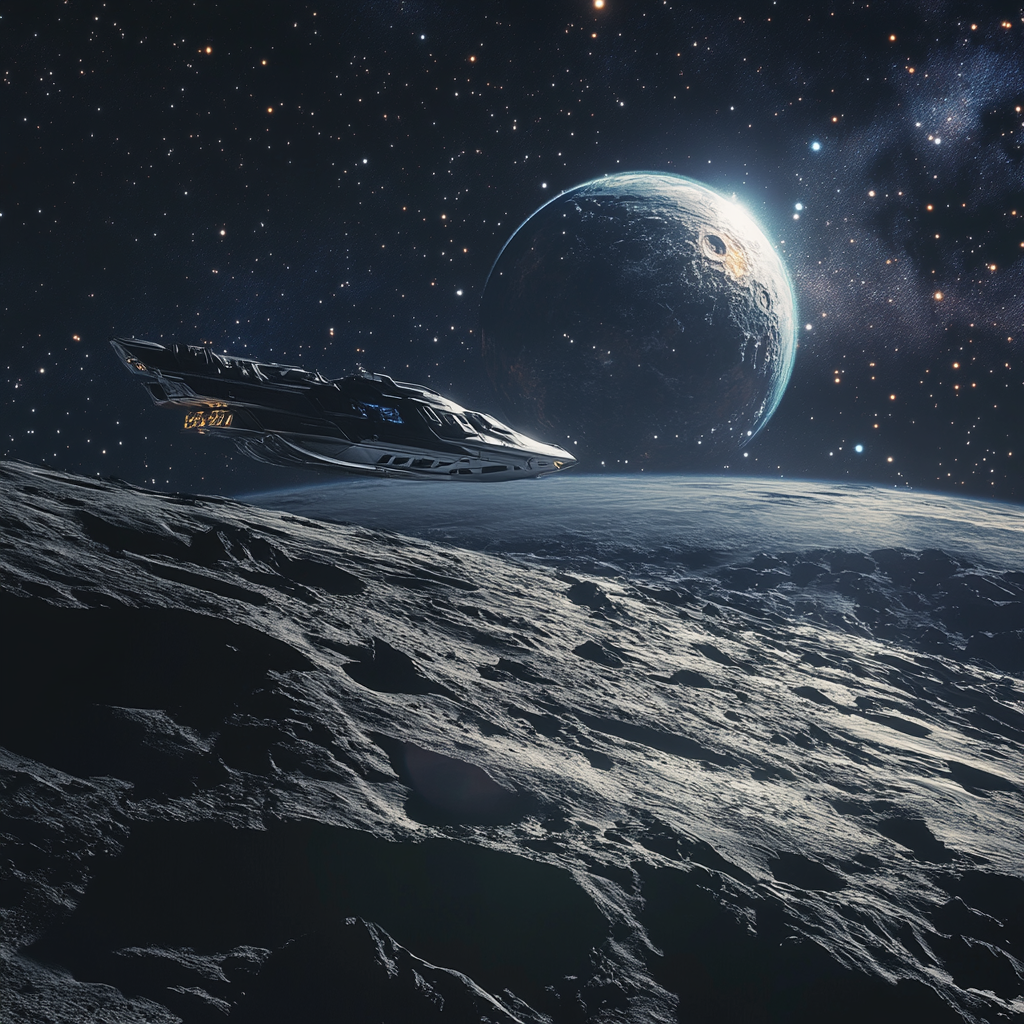
SpaceX to Launch Blue Ghost Moon Lander on January 15
As we prepare to embark on another thrilling chapter of human exploration beyond our little blue planet, the stage is set for an extraordinary event: the launch of the private Blue Ghost moon lander, crafted by the imaginative minds at Firefly Aerospace. Buckle up, folks, because on January 15, 2025, we’re not just sending a hunk of metal up; we’re aiming to land on the moon with style and purpose. This ain’t your average lunar trip—oh no! This is a spectacular leap into the unknown.
Now, before we delve deeper into this celestial escapade, let’s get our heads around what this mission actually intends to achieve, shall we? The Blue Ghost Mission 1 is not just a lucky guess by some over-caffeinated engineers. It’s a key player in NASA’s Commercial Lunar Payload Services (CLPS) program, designed to shake up our understanding of our lunar neighbor. This lander isn’t just about collecting moon sand; it’s all about scientific glory! It will assess heat flow from the lunar core, investigate how moon dust interacts with the surface, and pick up the electromagnetic vibes of the lunar crust. And let’s not forget, it also aims to snap X-ray images of Earth's magnetosphere, providing insights that’ll make even the most seasoned astronomer raise an eyebrow with excitement.
As if that wasn’t enough, the Blue Ghost has a tenacious agenda aboard. With a suite of ten payloads, it’s packed to the gills, including a dazzling electrostatic repulsion system that’s been designed with the sole purpose of giving harmful moon dust the old heave-ho. We’re talking about technology that’s crucial not just for this mission, but for paving the way for future lunar adventures. I mean, if we’re going to send humans to the moon again (which we totally should), we’d better have a plan to keep that pesky regolith in check. Nobody wants to spend their lunar vacation cleaning up dust bunnies!
Moving on to the nuts and bolts of this baby—I'm telling you, calling the Blue Ghost a moon lander is akin to calling a Ferrari a "car." It’s a sleek, box-shaped masterpiece outfitted with four sturdy landing legs and dual decks for all that precious equipment. It can carry a hefty payload of 155 kg thanks to its snazzy solar panels, strategically deployed to catch sunlight like a cat on a sunny windowsill. These panels will deliver a steady power of 450 W, going all the way up to a whopping peak of 650 W when the sun is just right. And guess how it manages the cold, unforgiving vibes of the moon? With an array of heat pipes, radiators, insulation, and yes, even active heaters. Who said space exploration didn’t involve a bit of cozy engineering?
Now, when it comes to communication, the Blue Ghost doesn’t just whisper sweet nothings. It boasts a downlink speed of 6 Mbps and can peak tactically at 10 Mbps—enough to send those excited lunar selfies back home in a flash. The uplink, while a bit slower, still manages to keep the connection alive like a trusty old friend.
Ready for a thrill ride? The Blue Ghost will be launched aboard a SpaceX Falcon 9 rocket, taking off from the iconic Launch Complex 39A at NASA's Kennedy Space Center in Florida. Just picture it: January 15, 2025, the launch window opens, and we’ll be watching as the "Ghost Riders in the Sky" prepare for lift-off. Can you feel that pulse of excitement yet? I can! After a brief 25-day spin around Earth, it’ll burn its engines to adjust its course towards the moon. The journey will take about 20 days, with four of those spent traveling, then another 16 days in lunar orbit, performing a coordinated ballet around our beige companion before it finally touches down in Mare Crisium, the "Sea of Crises"—because why not aim for a spot named after a dramatic saga?
Let’s take a moment to appreciate the rigor this baby has experienced before it's even set to launch. Firefly Aerospace has thrown the Blue Ghost into the deep end, simulating both the punishing sounds of a rocket launch and the extreme temperatures it will face on the lunar surface. We're talking about everything from high decibels to bitter cold—this machine has been tested like an Olympic athlete, and it’s ready to face the challenges of space. If you were worried about its preparation, rest easy knowing it aced that test like a champ.
Why should we get pumped about all of this? Simple: If all goes well, Firefly Aerospace is not just going to make history; they’ll be the first private company to land on the moon and operate for an entire lunar day—equivalent to 14 Earth days! This isn't just a spectacular PR stunt; this is the dawn of a new age in lunar exploration where commercial collaborations mix with government initiatives to usher in regular lunar access. Picture it: the moon as a new playground for both science and adventure—a tantalizing thought, isn’t it?
As we gear up for this colossal event, let’s tip our hats to the brave souls at Firefly Aerospace and the collaborative spirit of innovation that’s driving us to the stars. The Blue Ghost moon lander isn’t merely a metal lantern illuminating the lunar darkness; it’s a bold statement about what the future holds for humanity as we reach for the skies.
Don’t miss out on the thrill of the cosmos! Want to stay up to date with the latest news on space missions and technological advancements? Subscribe to our Telegram channel: @channel_neirotoken

